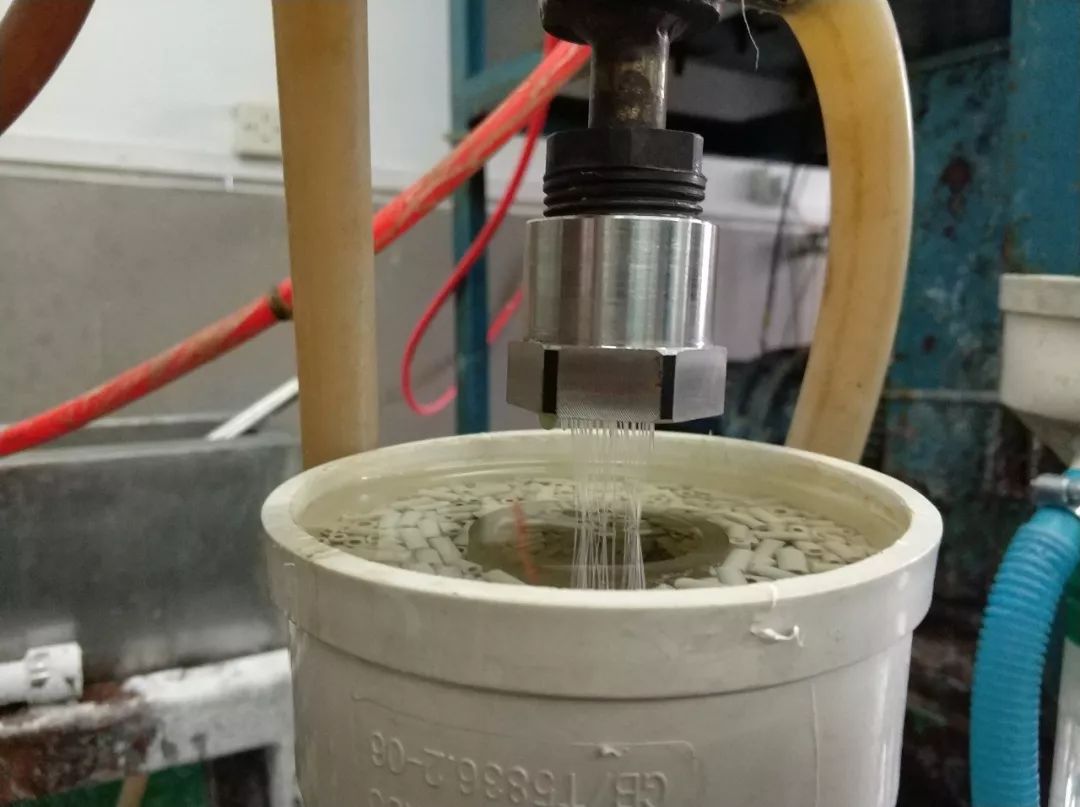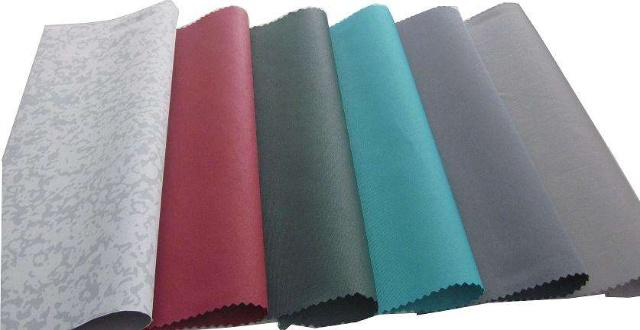The dry and wet spinning process of high-performance meta-aramid fiber has achieved a phased breakthrough
High-performance metaaramid fiber achieved a phased breakthrough in dry and wet spinning process

Recently, the high-performance meta-aramid fiber dry and wet spinning process developed by Times New Materials has achieved a phased breakthrough. The stable realization of key process control such as dope processing, extrusion molding, and bidirectional diffusion has paved the way for the development of high-performance meta-aramid fiber. The preparation lays a good foundation.
Dry and wet spinning means that the spinning solution is extruded from the spinneret, passes through an air layer and then enters the coagulation bath. Compared with ordinary wet spinning, the spinning speed can be increased by 5 to 10 times. This method combines the advantages of wet spinning and dry spinning. It not only has the characteristics of dry spinning such as high-speed spinning, high-concentration spinning, and high draft ratio spinning, but also maintains the controllable coagulation bath. The wet spinning process, which adjusts various parameters to adjust the fiber structure, is the preferred method for preparing high-performance fibers. The fiber produced by this method has fewer holes, a more uniform structure, high crystallinity and orientation; at the same time, the difference between the skin and core layers is small, the cross-sectional structure can be close to a circle, and the strength and elasticity are improved. In addition, the fiber body produced by this method has high density, smooth surface, no grooves and few internal defects.
Meta-aramid fiber is widely used in electrical insulation, honeycomb materials, flame-retardant protection, high-temperature filtration and other fields because of its characteristics of light weight, softness, high strength, high gloss, insulation, and flame retardancy. The only meta-aramid fibers that were commercialized in the early stage were Nomex from DuPont in the United States, Conex from Teijin in Japan, and Fenilon fiber from Russia. The high-performance fiber market is basically controlled by DuPont in the United States and Teijin in Japan. Other manufacturers are competing due to their technology, quality, and Due to scale and other reasons, it is currently unable to compete with it.
Times New Materials has been engaged in meta-aramid research for many years. It has built a complete pilot line for resin polymerization and fiber preparation. It has a group of R&D personnel specializing in functional fibers, high-performance fibers, and special fibers. The research fields cover everything from fiber raw materials to resins. Synthesis, spinning forming principles and processes, spinning equipment design and manufacturing, fiber high performance and functionalization, etc. Times New Materials will continue to promote the research and development of high-performance meta-aramid fibers and break the monopoly of foreign companies on the high-performance meta-aramid fiber market.
1. Aramid fiber board reinforcement principle

The main method of reinforcing the aramid fiber board is to use structural glue and then paste the aramid fiber board in the tension area of the beam bottom along the tensile direction or perpendicular to the direction of the crack, so that the aramid fiber board and the reinforcement matrix form a new composite to improve the aromatic properties. The fiberboard and the original reinforced concrete structure jointly increase the crack resistance or shear resistance of the structure, and improve the strength, stiffness, crack resistance and elongation of the structure. Aramid fiber boards and concrete beams transmit shear stress (anchoring shear stress) and bonding normal stress (peeling normal stress) through the bonding layer to achieve the purpose of working together. However, during use, the top of the aramid fiber board often produces large anchoring shear stress and peeling normal stress. Therefore, there are three main common failure modes: ① The concrete in the pressure zone is crushed, which is equivalent to a concrete reinforced beam. Destroy the good ductility of the beam body: ② Shear failure of the concrete bonding surface, that is, under the stress at the end of the aramid fiber board, the aramid fiber board peels off due to the low peel strength of the bonding layer; ③ Peeling failure of the concrete protective layer, This is because the concrete protective layer at the end is pulled apart to produce vertical cracks. When the cracks extend to the longitudinal steel bars, horizontal peeling cracks occur along the steel bars, causing the aramid fiber board and the protective layer to peel off and fail.
2. Current application status of aramid fiberboard reinforcement technology

Aramid fiberboard has excellent properties such as high strength, good durability, strong resistance to acid and alkali chemical corrosion, and high compressive and shear strength. It is widely used in the reinforcement of beams, slabs, columns, walls of industrial and civil buildings, highway bridges, tunnels, chimneys, tower structures and other facilities. However, there are not only few reinforcement examples of bonded aramid fiber sheets, but also very few studies on the bending performance of reinforced concrete beams. Although the research and application of aramid fiberboards abroad have become mature and there are many related academic research results, domestic research on aramid fiberboards has just started. Moreover, due to the high price of aramid fiber, its mechanical properties are not Similar to carbon fiber, in summary, aramid fiber board is not as cost-effective as carbon fiber board, and there are few relevant research results, so aramid fiber has not been widely used.
Summarize
Aramid fiberboard has excellent mechanical, physical, and chemical properties and has not been widely used to solve the corrosion problems of tunnels, pavements, and bridge deck concrete structures. In addition to its price, more importantly, the performance of aramid fiberboard�There is less research. Limits the use of aramid fiberboard. This article believes that on the one hand, the resource development of aramid fiber should be increased to curb its high price; on the other hand, research in these aspects should be increased to lay a solid theoretical foundation for the application of aramid fiber boards in practical engineering:
1. Study on the improvement of the stiffness effect in the elastic stress stage by pasting aramid fiberboard;
2. In addition to preventing the expansion and reinforcement of existing cracks, pasting aramid fiberboard can also improve early cracking;
3. Research on the comprehensive strength of the entire reinforced matrix after aramid fiberboard is pasted;
4. Research on anchoring measures of aramid fiber boards and research on local thinning of aramid fiber plates.







